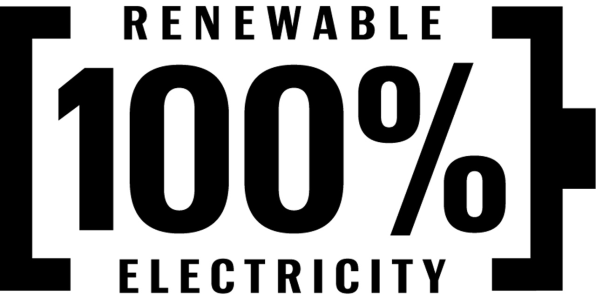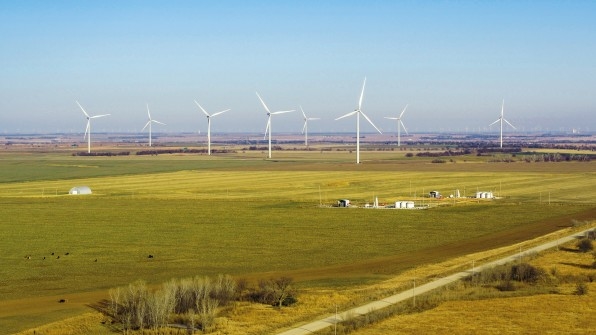Last March, AB InBev announced every single bottle of beer it brews will be done with renewable energy by 2025. The company is making progress on that pledge and by this spring, every bottle of Budweiser brewed in the U.S. will be made with renewable electricity. This week the brand is unveiling a new symbol it will be putting on each bottle produced with 100% renewable energy.

AB InBev is using Budweiser, its flagship brand and the globe’s biggest international beer brand, to drive its renewable energy program, both internally and in its goal to encourage more companies to sign on to similar goals and adopt the new emblem. Every day around the world, 41 million Budweisers are sold, and the company says switching to renewable electricity in Bud brewing operations is the equivalent of taking 48,000 cars off the road every year.

Budweiser’s vice president of global marketing Brian Perkins says that while a lot of companies make sustainable commitments, they’re often five or 10 years in the future and not immediately in the consumer domain, too far off to have consumers talking about consistently. “What’s interesting and different about this is it’s a consumer-facing symbol on the packaging, so when people are getting together for beers all over the world, they’re going to know those beers were brewed with 100% renewable electricity,” Perkins says. “That, to me, is a seismic shift because then we’re going to have everyday people talking about it and talking about the issue.”
It’s no secret that consumers are increasingly aware of companies’ stance on climate change and how they address it in their business practice and supply chains. And while this is most definitely a keen marketing move, Perkins says it’s primarily a business decision.
“People have been getting together for beers for more than 3,000 years,” he says. “We’re the biggest beer company in the world, Budweiser is the biggest beer brand in the world, so it’s massively in our business interest to help create a healthy planet so people can keep getting together for beers over the next 3,000 years.”
The U.S. electricity will be sourced from the Thunder Ranch Wind Farm in Oklahoma, which is powered by Enel Green Power, and will roll out to additional markets as they reach 100% renewable electricity in their Budweiser brewing operations. “And that’s just the beginning,” says Perkins. “There’s a solar field in Texas coming online in the next couple of years, as well as more similar infrastructure and deals happening in some of the bigger countries where we operate.”
Budweiser is consulting with organizations like The Climate Group’s RE100 (a group of global companies with commitments to going “100% renewable,” like Apple, Ikea, and Coca-Cola), and working with Accenture to roll out both its own renewable program as well as this new symbol. The new design is black and white, and looks like a battery, with no references to Budweiser or AB InBev at all. Perkins says this was to help convince more companies to adopt it so consumers know which products are being produced with renewable energy.
“Our hope is that by introducing this, we can start to create a dynamic where people can actually support brands that commit to this kind of thing, through the beers they choose to drink,” says Perkins. “In that sense, I think it can be tremendously valuable for the brand.”
Perkins is traveling to Davos to talk with NGOs, other businesses, and scientists about how to spread the 100% Renewable Energy symbol beyond Budweiser. Following Davos, Budweiser is creating an advisory panel to meet three or four times per year to talk about the progress of the campaign and the movement.
“Decisions like this are good for the environment, good for business, and according to the many consumers we’ve talked to, it’s great for them too,” says Perkins. “We see it as win-win-win.”
Fast Company , Read Full Story
(82)